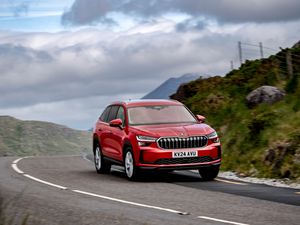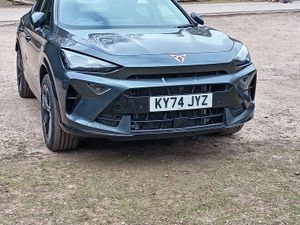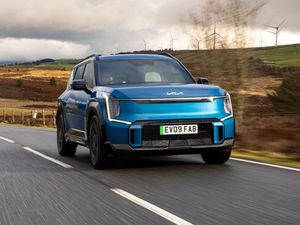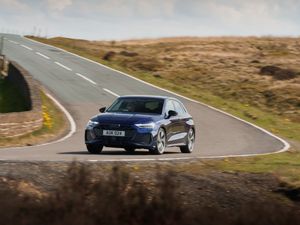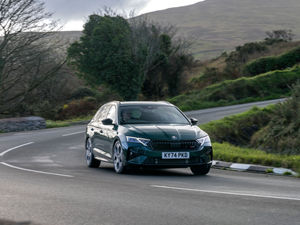First Drive: The Toyota Highlander is a compelling addition to the UK SUV market
The Highlander is making its debut in the UK. With seven seats and a hybrid powertrain, it sounds like an appealing proposition.
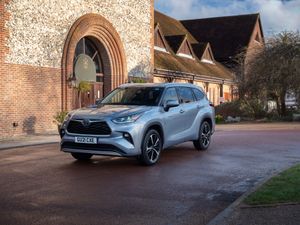
What is it?
The SUV market is huge in the UK, so perhaps the only surprise about the fact that the Toyota Highlander is being brought to these shores is that it’s taken this long. Now in its fourth generation, this seven-seat SUV sits on a new platform and has a hybrid engine, the latter sure to make it appealing to British buyers.
Although the Highlander started life as a mid-sized SUV in the Australian, Japanese and American markets, it has grown over the years to the behemoth we have today. This is now truly a ‘world car’, being sold across Europe, America, Asia and the Middle East.
We’ve been behind the wheel to find out if its combination of practicality, sleek looks and an electrified powertrain combine to create a compelling product for the UK market.
What’s new?

The key change for the fourth-generation Highlander is the move to a new platform, which opens up a whole raft of improvements including electrification, safety and driveability. As such, it comes with Toyota’s Safety Sense technologies and the latest generation hybrid powertrain.
It also gets four-wheel-drive, while the new platform gives it the lowest centre of gravity in the segment. This, combined with soft springs, are designed to make it more comfortable, while sound deadening improvements should make it quieter in the cabin.
What’s under the bonnet?

Power comes from the fourth generation of Toyota’s self-charging hybrid system. The 2.5-litre petrol engine works with an electric motor on each axle, and is the most powerful hybrid the firm has ever made, making 245bhp with a 0-60mph time of about 8.1 seconds possible.
It’s impressively efficient for a large SUV, recording up to 39.7mpg in official tests, while CO2 emissions are between 160 and 163g/km, depending on the version. Toyota reckons you can do up to 80 per cent of driving emissions-free, and while we didn’t notice it being quite that high, we did notice an impressive amount of electric-only driving for a non-plug-in model.
What’s it like to drive?

When you climb aboard the Toyota Highlander, it doesn’t feel quite as huge as it looks from the outside, but you’re under no illusions this is a big old truck. However, it’s immediately impressive once you pull away. The electric powertrain is silent and responsive, bringing high levels of refinement on the move, while the soft suspension makes potted roads breeze by in comfort.
And once speeds pick up and the road gets curvier, the Highlander’s huge sides don’t make it a wallowy mess. It’s incredibly composed in corners, which helps to make it far less intimidating to drive. It remains comfortable at motorway speeds too, ironing out road imperfections and keeping outside noise to a minimum.
How does it look?

There’s no hiding the fact that this is a massive SUV, but to those who need seven-seat practicality that’ll come as no surprise. Toyota has done a great job of breaking up its large panels though, with a prominent crease in the doors giving the wheel arches a muscular appearance.
Up front, the narrow headlights and angled lower bumper pinch the front end into a prominent grille, and while it’s far from pretty, it does have that quirky Japanese styling that has served Toyota and Lexus particularly well in recent years.
What’s it like inside?

Nothing’s perfect, and while the sleek exterior styling and impressive ride quality are that of a premium product, the interior has a more functional appearance. That’s by design as the Highlander is focused at being a durable family wagon, but the dashboard already looks somewhat dated.
This largely comes from the infotainment screen, which is an eight-inch unit that looks quite small by modern standards (especially in a cabin this size). It has all the functionality you need, though, including Apple CarPlay and Android Auto.
More positively, the materials and upholstery feel like they’re decent quality in all the right places, there are plenty of storage solutions, and everyone on board has plenty of space.
What’s the spec like?

There are only two trims, called Excel and Excel Premium, starting from £50,595 and £52,575 respectively. The standard trim includes 20-inch alloy wheels, three-zone air conditioning, heated leather front seats, the eight-inch infotainment screen, LED headlights, wireless phone charging and a JBL speaker system.
Upgrade to Excel Premium and you get a different style of alloy wheels, ventilated front seats, heated rear seats, head-up display, 360-degree camera, and a heated leather steering wheel.
Verdict

Overall, the Toyota Highlander is a fantastic proposition. It looks great, will be hugely practical for big families, and has an efficient hybrid powertrain. If you’re looking for a classy interior it might be a let down, but the overall driving experience is hugely impressive.
Price-wise it’s dangerously close to entry-level versions of the likes of the Audi Q7 and Land Rover Discovery, so if badge appeal matters above all-else they could be worth a look. But if eco credentials are more important, the Q7 plug-in hybrid is considerably pricier, while the Discovery only has mild hybrids, making the Highlander’s price all the more reasonable.

